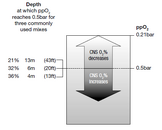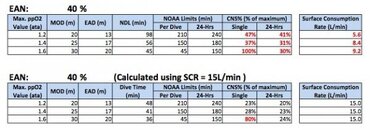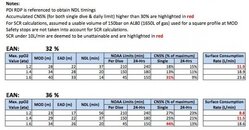Not sure which agencies you refer to. The two largest agencies certainly don't...
Here's what PADI used to teach:
"It’s recommended that you have a surface interval of at least an hour between enriched air dives whenever possible, especially if you exceed more than 50 percent of allowable exposure. This is believed to further reduce the likelihood of oxygen toxicity.
1. There are methods for calculating surface interval credit for your oxygen exposure. Enriched air dive computers generally do this automatically.
2. In recreational no stop enriched air diving, the benefits of such credit are minor, yet make repetitive dive planning with tables unnecessarily complex. Therefore, you don’t calculate surface interval credits when determining oxygen exposure with tables.
3. Technical divers can benefi t from oxygen exposure surface interval credit and are trained to do so. [Refer interested students to the DSAT Tec Deep Diver Manual for more information, but emphasize that surface interval credit for oxygen exposure is not really an issue in recreational enriched air diving.]"
That's the 'old' in-depth EANx course. The new EANx course barely even mentions it..
Here is what SSI say:
"For recreational divers, as long as you do not exceed a P02 of 1.4 atmospheres and your single dive time does not exceed 150 minutes 12.5 hours}, or your 24 hour limit does not exceed 180 minutes 13 hours}, the oxygen limits won't be exceeded."
"...Requires extensive exposure at P02 levels above .5 atmospheres, which are well above those experienced by recreational divers".
"As this is a recreational Nitrox course, you should place primary emphasis on avoiding the need to perform complex CNS "Clock" calculations by remaining within a limiting PD2 of 1.4 atmospheres and keeping 24-hour accumulated Actual Bottom Time lABTI well within the 180 minutes NOAA recommends. Remind students that CNS "Clock" calculations are covered solely as a contingency in case they should accidentally exceed these limits."







